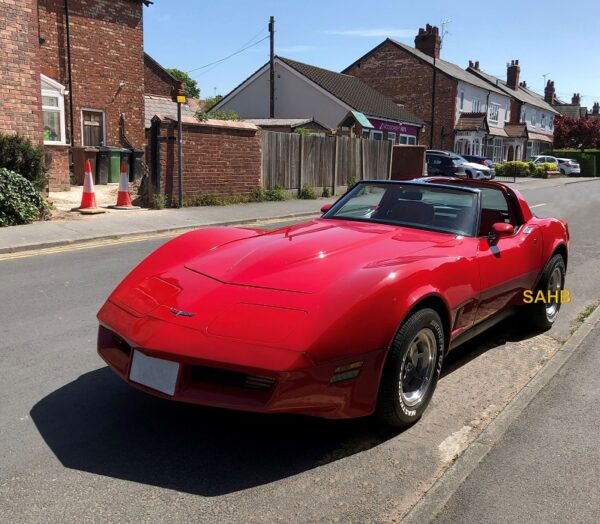
In 1953, GM executives accepted a suggestion by Myron Scott, then the assistant director of the Public Relations department, to name the company’s new sports car after the corvette, a small manoeuvrable warship. Different models of Corvette have their adherents. Some love the purity of the original C1 made from 1953 to 1962 in three iterations, gaining side scallops in 1956 and twin headlamps in 1958. For many the definitive Corvette is the C2 Sting Ray (1963-1967); much sought-after is the 1963 coupe with its (sadly impractical) split rear window.
The C3, built from 1968 to 1982 is perhaps less popular, but the owner of the example in our Snapshot was certainly a fan and has clearly kept it in beautiful condition. This shape was based on the Mako Shark II concept car designed by Larry Shinoda as early as 1964, under the direction of Bill Mitchell. The C3 coupes made use of T-top removable roof panels, as seen here. The model introduced performance versions whose names would be revived in later Corvette generations, such as LT-1, ZR-1 and Z07. In 1978, the Corvette’s 25th anniversary was celebrated with a two-tone Silver Anniversary Edition and an Indy Pace Car replica edition. This was the first time that a Corvette was used as a Pace Car for the Indianapolis 500.
The base engine was the 350 cu in (5.7 litre) engine that replaced the old 327 cu in (5.36 litre) in 1969, but ‘our’ example has the 327. Both produce around 300 hp. The optional high compression, high-revving LT-1 small-block produced 370 hp. The 427 big-block was enlarged to 454 cu in with 390 hp. The ZR-1 special package was an option available from 1970 to 1972 and included the LT-1 engine combined with special racing equipment. Only 53 ZR-1 cars were built.
There were subtle styling changes over the years, but in 1980, the Corvette received an aerodynamic redesign that gave a significant reduction in drag and increased radiator air flow. The 1981 Corvette was the first to use a fibreglass rear leaf spring, now a Corvette trademark. The spring saved thirty-six pounds, but was limited to base-model cars with standard suspension and automatic transmission.
The C3 featured in several films and TV series. Perhaps the most curious appearance was in the 2014 series Fargo, season 3, where the character Ray Stussy (played by Ewan McGregor) inherits an orange C3. He quarrels a lot with his twin brother about who got the best part of the inheritance – the C3 or a rare stamp collection. We would go for the C3, but this is the SAHB, after all.







Leave a Comment